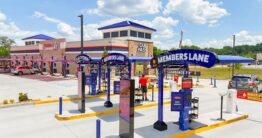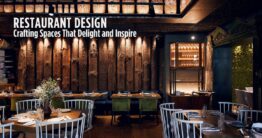
Not long ago, transitional senior living facilities were a new concept. The largest, and most disliked, of the available senior living options was the nursing home. Almost all of the existing stock of about 1.7 million beds in skilled-nursing centers, long-term care facilities, and nursing homes was built in accordance with the concept (enforced by state codes) that these were essentially low-tech hospitals.
In a ten year span, from 2005 – 2015, the number of nursing home beds in America shrunk by 9%. The old design model of the typical semi-private room with one bed by the window, one by the bathroom, and a curtain in between to separate the two occupants has been challenged. Serious environmental design research has been done, and a new, transitional concept, is emerging.
The following five considerations are key to designing an assisted living facility that not only serves its residents no matter their stage, but also stays competitive in this emotionally driven market.
LOCATION. LOCATION. LOCATION.
Developers of assisted living facilities spend months, even years, sifting through dozens of possible locations reviewing permitting restrictions & code enforcement to ensure their facility can be built without sacrificing their carefully designed specifications.
In addition to meeting physical restrictions, ideally, the location includes an aging population surrounded by families living in a close enough proximity to support their loved ones.
A prime location should also have easy access to conveniences that not only speak to the needs of senior patients themselves, but also to those of the patient’s extended care team, including family members and caregivers.
CONNECTION TO COMMUNITY
Moving from a familiar neighborhood or family setting into a community of strangers can be a stressful experience, which is why it’s important to create a campus that promotes interaction with other residents.
Senior living architects/designers are creating opportunities for purposeful engagement through their programming and operations, rather than simply providing activity spaces. This encourages residents to participate in actual daily activities like meal prep, laundry, and gardening.
AMENITIES
In today’s climate, many seniors are redefining retirement. They do not see moving into a senior living facility as a decision to drop out of life. Instead, they want to continue their lives and interests long after age 75.
Assisted living facilities must adjust their amenities to make the transition from home as seamless as possible. Trends include providing dining facilities with a restaurant-like feel which support social interaction, such as a bar, bistro or ice cream parlor. Facility amenities are also borrowing from the hospitality industry with sports facilities, theaters, art gallery space, general stores, and on-site health services.There is a fine balance between providing the comfort of traditional surroundings that seniors tend to value, and the offer of latest technologies if and when they want to spread their wings a little. This balancing point tends to progress slightly over time, as generations shift.
So much of senior living is about detail: what the clients can see, what they can do, even when they’re very frail. The amenities and finishes are such that your first impression is that you’ve walked into a five-star hotel.
It’s important to find a balance between hospitality and institutional. Designers are recognizing that people don’t want to live long-term in a hotel and so they must strike a balance between high-end finishes and treatments while still being residential and functional. This is where attention to detail really matters, ensuring that the décor, materials, colors/patterns, lighting, flooring and accessories go hand in hand to create a homelike design that creates opportunities to interact and supports the residents’ needs.
DEFINING “HOME”
Individuals considering retirement options for themselves or a family member have not been satisfied with the limited options of the past and are demanding new choices.
Transitioning to a new residence can be a daunting experience, but offering homelike qualities can ease worry and stress among patients. However, because homes differ from patient to patient, a little customization can go a long way. Offering design services such as choices of colors, finishes, placement of furniture, artwork and materials provide a sense of control that can be important for many seniors.
Something as simple as providing views of flowering courtyards helps residents relate to the seeds they have planted at their own homes over the years.
FILING THE CONTINUUM
A growing part of the market wants to choose an option that gives them security for the remainder of their lives— independent living (“senior housing” for those who are ambulatory), assisted living for the frail who do not need 24-hour care, and long-term care (i.e., 24-hour nursing homes.
Choosing a designer/architect who can help your design follow the progression in the level of care provided, beginning with the most self-sufficient seniors, is important to the long-term success of your project.
As a building type, senior living facilities allow you to see a direct correlation between designing something right and its impact on people’s lives. Building an environment for the aging that frees them, encourages them, and enhances their quality of life is the goal. The success lies in creating the most innovative and responsive solution for residents.
THE STANDARDS – JUST IN CASE YOU ARE CURIOUS
Several key standards, codes, and guidelines apply to the building and design of senior living. Accessibility issues are addressed by the Americans with Disabilities Act (ADA). The Facility Guidelines Institute (FGI) Guidelines for the Design and Construction of Residential Health, Care, and Support Facilities, published every four years, provides direction on programming in skilled nursing, or nursing homes, and assisted living. Building inspectors use the International Building Code (IBC), which is updated every three years by the International Code Council. And NFPA 101, Life Safety Code, updated by the National Fire Protection Association every three years, guides fire officials.








